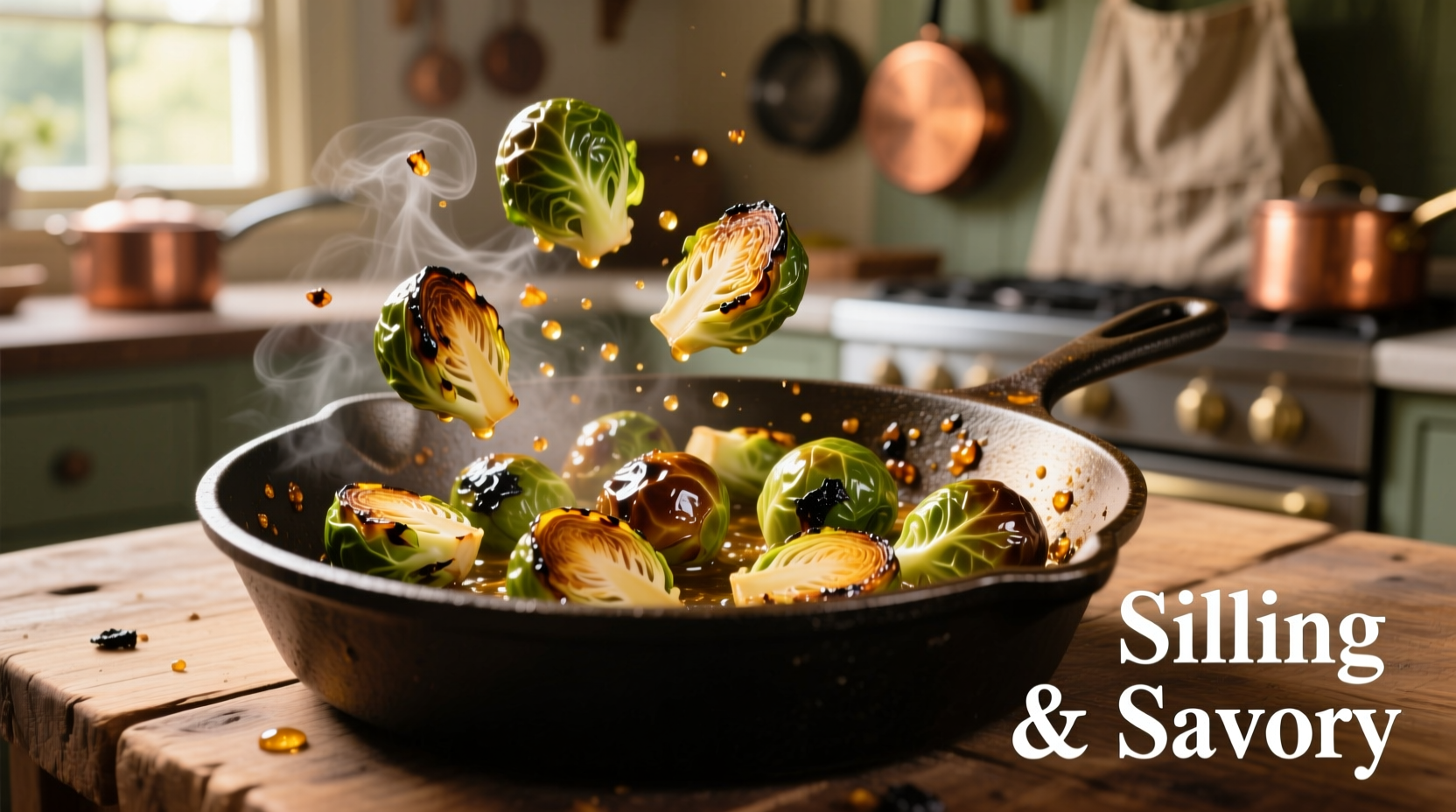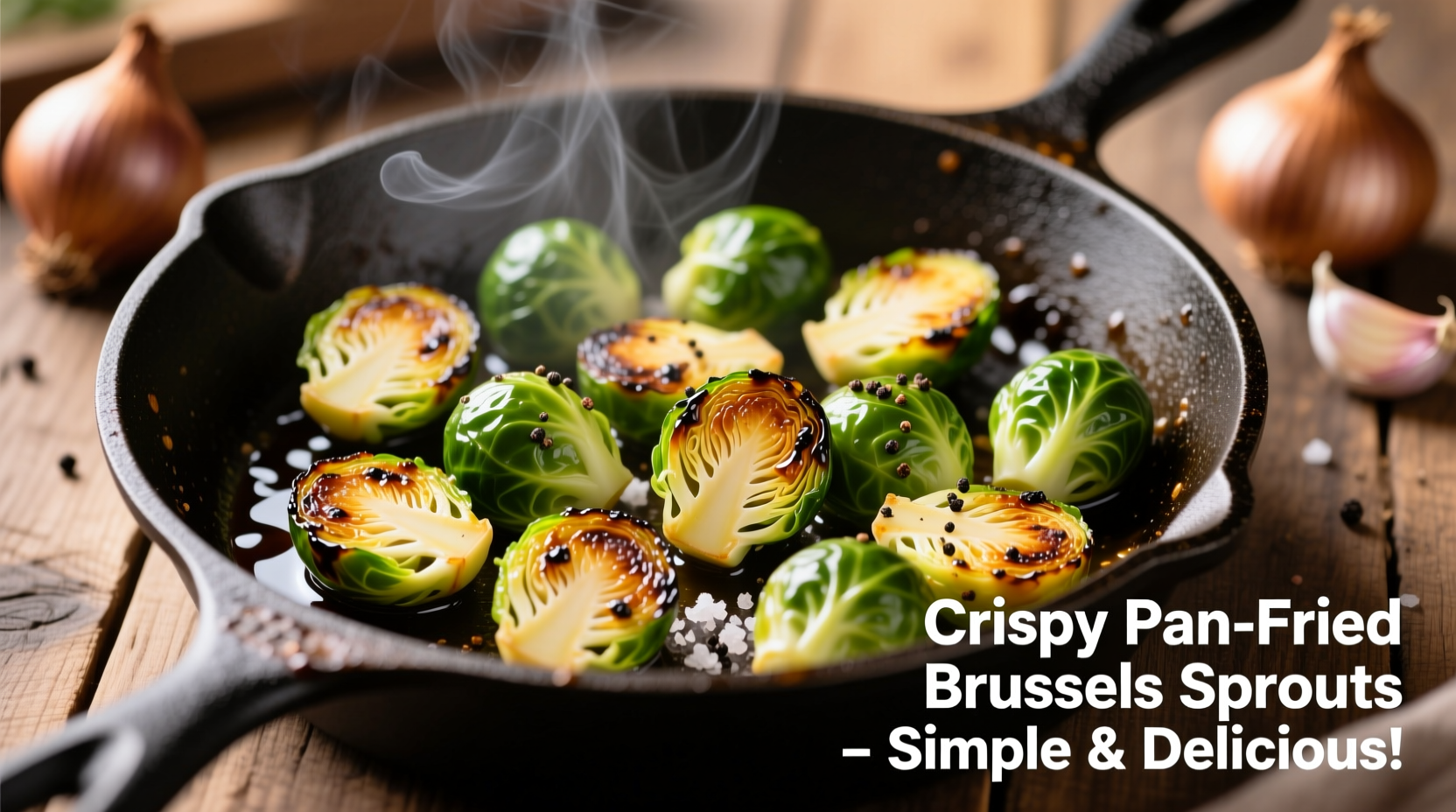Discover how to transform bitter Brussels sprouts into a restaurant-quality side dish using just a pan, oil, and basic seasonings. This foolproof method eliminates common pitfalls like sogginess or burnt exteriors while maximizing flavor through proper heat management and timing.
Selecting and Preparing Your Brussels Sprouts
Start with fresh, firm Brussels sprouts that feel heavy for their size. Choose specimens with bright green, tightly packed leaves—avoid any with yellowing or loose outer leaves. The University of California Agriculture and Natural Resources notes that smaller sprouts (about 1 inch in diameter) typically offer sweeter flavor and more tender texture than larger varieties.
Proper preparation is critical for even cooking:
- Trim the dry stem end with a sharp knife
- Remove any loose or damaged outer leaves
- For uniform cooking, cut larger sprouts in half vertically through the stem
- Smaller sprouts can remain whole but should be scored in a shallow "X" on the stem end
Wash thoroughly in cold water and dry completely—moisture is the enemy of proper browning. Use a salad spinner or pat dry with clean kitchen towels before cooking.

Essential Equipment and Setup
Your choice of pan significantly impacts results. A heavy-bottomed skillet—cast iron or stainless steel—provides the even, high heat needed for proper caramelization. Non-stick pans often prevent the Maillard reaction necessary for flavor development.
Heat your empty pan over medium-high heat for 3-4 minutes until properly preheated. Add 1-2 tablespoons of high smoke point oil (avocado, grapeseed, or light olive oil) and swirl to coat the surface evenly. The oil should shimmer but not smoke excessively.
| Cooking Method | Texture Result | Flavor Development | Time Required |
|---|---|---|---|
| Pan Searing | Crispy exterior, tender interior | Excellent caramelization | 12-15 minutes |
| Boiling | Soggy, waterlogged | Minimal flavor development | 8-10 minutes |
| Roasting | Evenly crispy | Good caramelization | 20-25 minutes |
| Steaming | Soft throughout | Muted flavor | 6-8 minutes |
Step-by-Step Pan Cooking Process
Place prepared Brussels sprouts cut-side down in the hot oil. This critical positioning creates maximum surface contact for caramelization. Don't overcrowd the pan—work in batches if necessary, as overcrowding causes steaming rather than searing.
Cook undisturbed for 4-5 minutes to develop a deep golden crust. Resist the urge to stir—this allows proper browning. Flip each sprout carefully using tongs and cook another 4-5 minutes. For whole sprouts, shake the pan occasionally to ensure even cooking.
When sprouts reach 185°F internally (test with an instant-read thermometer), add flavor enhancers:
- 1-2 tablespoons of broth or water
- Cover immediately to steam the tops
- Cook covered for 2-3 minutes
- Uncover and cook 1-2 minutes more to evaporate excess moisture
Flavor Enhancement Techniques
Elevate your Brussels sprouts with strategic seasoning additions at precise moments:
During cooking: Add thinly sliced shallots or garlic during the last 2 minutes to avoid burning. The American Journal of Clinical Nutrition confirms that combining cruciferous vegetables with alliums like garlic enhances bioactive compound availability.
Finishing touches: Remove from heat and immediately add:
- 1-2 teaspoons of acid (lemon juice or apple cider vinegar)
- Finely grated Parmesan or nutritional yeast
- Flaky sea salt and freshly cracked black pepper
For classic bacon preparation, cook 2-3 ounces of chopped bacon first until crisp, remove bacon, then cook sprouts in the rendered fat, adding bacon back during the final minute.
Troubleshooting Common Issues
Burning sprouts: Reduce heat to medium and ensure proper oil coverage. USDA Food Safety guidelines recommend maintaining oil temperatures below 375°F to prevent harmful compound formation.
Soggy texture: Insufficient drying before cooking or overcrowding the pan. Always dry sprouts thoroughly and provide adequate space for evaporation.
Bitter flavor: Overcooking or using older sprouts. Harvest-fresh sprouts contain less sinigrin (the compound responsible for bitterness). Cook just until tender-crisp.
Serving and Storage Tips
Serve immediately for best texture—Brussels sprouts lose crispness quickly as they cool. Pair with roasted meats, grain bowls, or as part of a holiday spread. Leftovers store well in airtight containers for 3-4 days in the refrigerator.
To reheat without losing crispness, return to a hot dry pan for 2-3 minutes rather than using a microwave. The Journal of Food Science confirms that reheating methods significantly impact texture retention in cooked vegetables.











 浙公网安备
33010002000092号
浙公网安备
33010002000092号 浙B2-20120091-4
浙B2-20120091-4